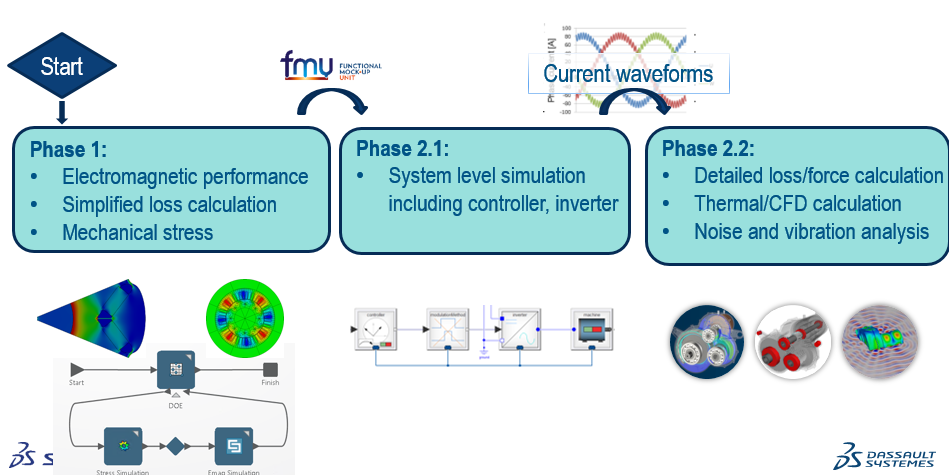【电磁技术在线】【电机篇】- 3. 多物理DOE(Process Composer)
讲师:Christian Kremers
00:00 内容介绍
02:30 电机总体设计流程
03:45 电机CAD
04:30 第一阶段
CATIA 电机CAD->Abaqus分析机械特性, CAD->CST powerby 分析电磁特性
07:30 结构和应力分析
09:30 电磁和力矩分析 (DQ, 动态特性,涡流损耗,退磁)
16:00 DOE优化
18:00 结果和数据分析
21:10 第二阶段 demo
CST 电机FMU模型->Dymola系统控制->电流波形->CST 电机损耗和效率图
24:30 电机终端绕组如何仿真
27:00 第三阶段
CST 电机损耗->热力学管理, CST 集总力->噪声和振动分析
电机设计流程:

喷油雾仿真:

水冷仿真:

噪声和振动仿真

The electric drive constitutes a critical component for the electrification of vehicles and hence the electro-mobility strategy. A complex system in its own right, the electric drive needs to be integrated into both the electric powertrain and the full vehicle. Gaining early insights into system interdependencies using Model-Based Systems Engineering (MBSE) is key to achieving the best possible performance for competing design objectives. It enables tight integration of design and simulation activities, including connecting system simulation with physics simulation.
Multiphysics simulation enables engineers to predict and verify the system performance across multiple design objectives and in all possible operating scenarios. However, many of the disciplines are competing and finding the best trade-offs is a challenge. The teams need a collaborative environment which allows them to optimize designs by simultaneously taking into account thermal and mechanical requirements, electromagnetic performance, durability, noise and vibration control, as well as lubrication requirements.
Dassault Systèmes offers best-in-class solutions for electric drive engineering within a collaborative environment.
更多内容:https://www.3ds.com/products-services/simulia/solutions/transportation-mobility/electric-drive-engineering/





